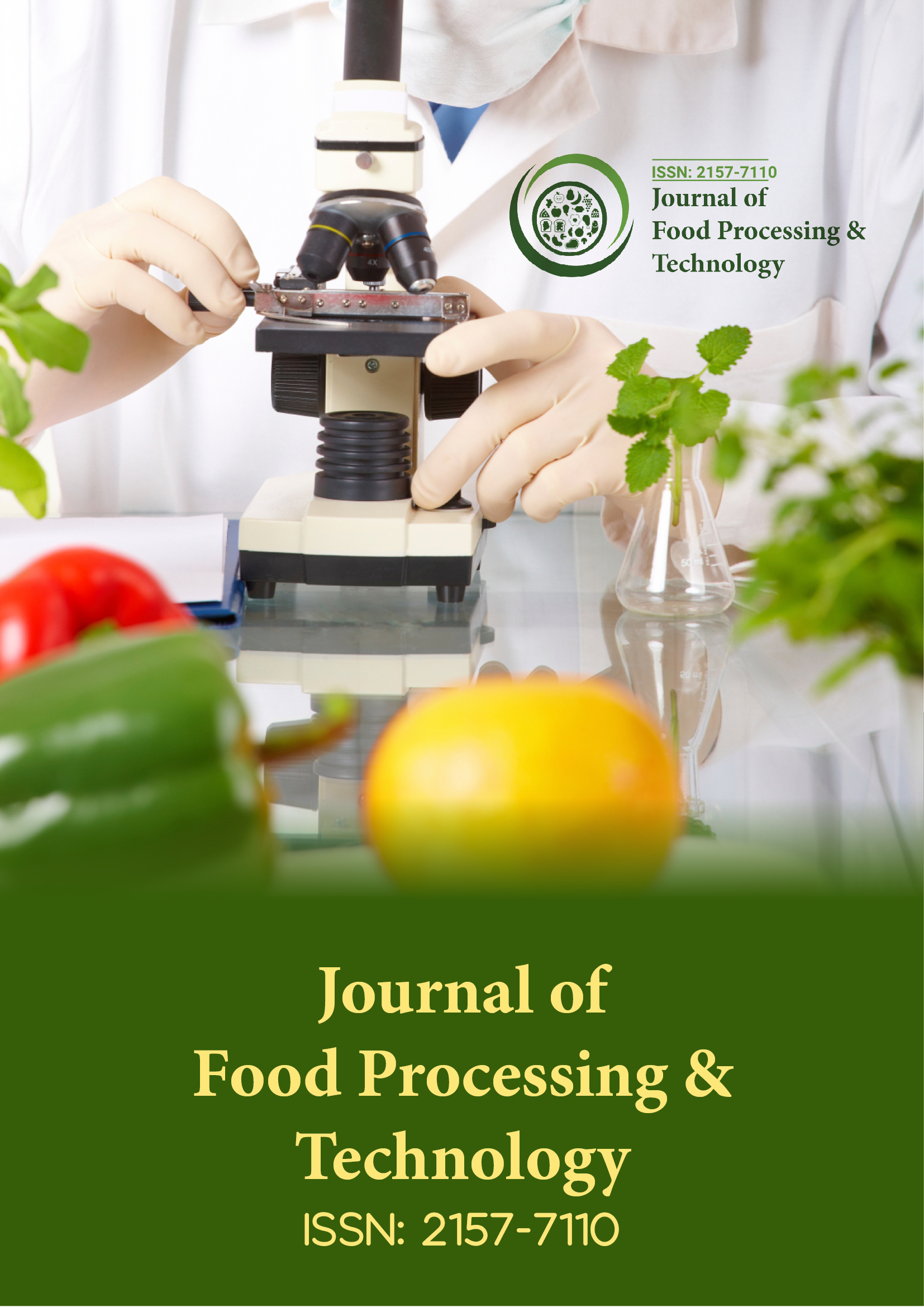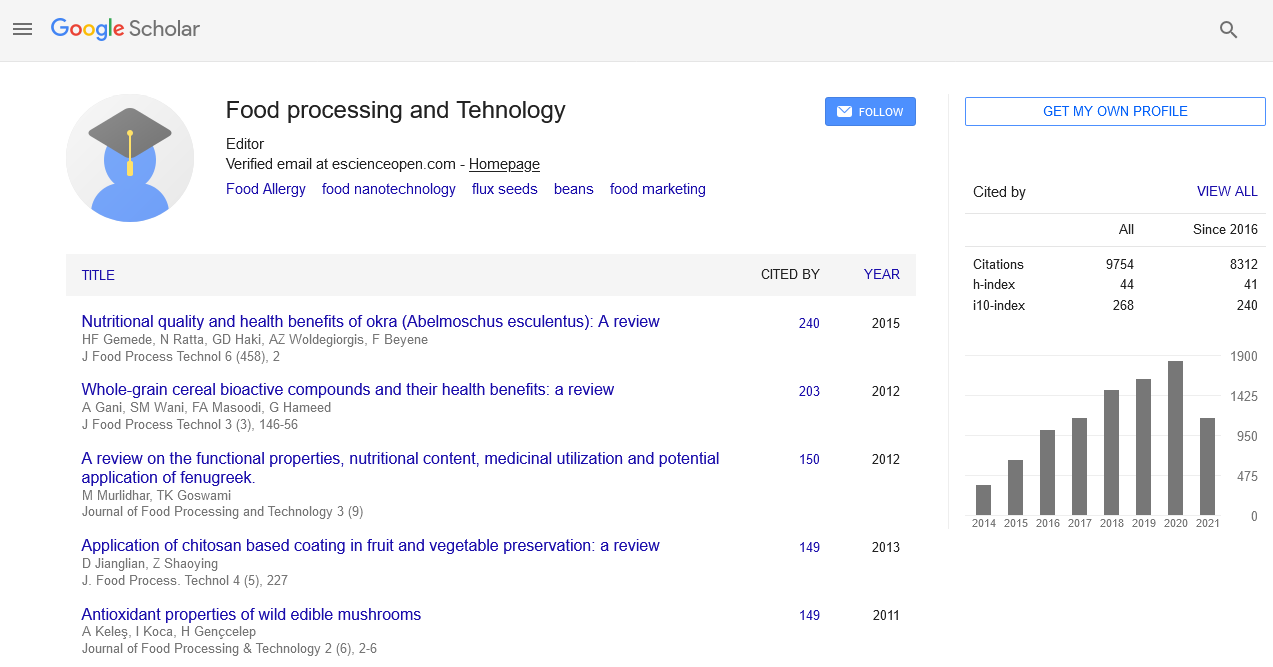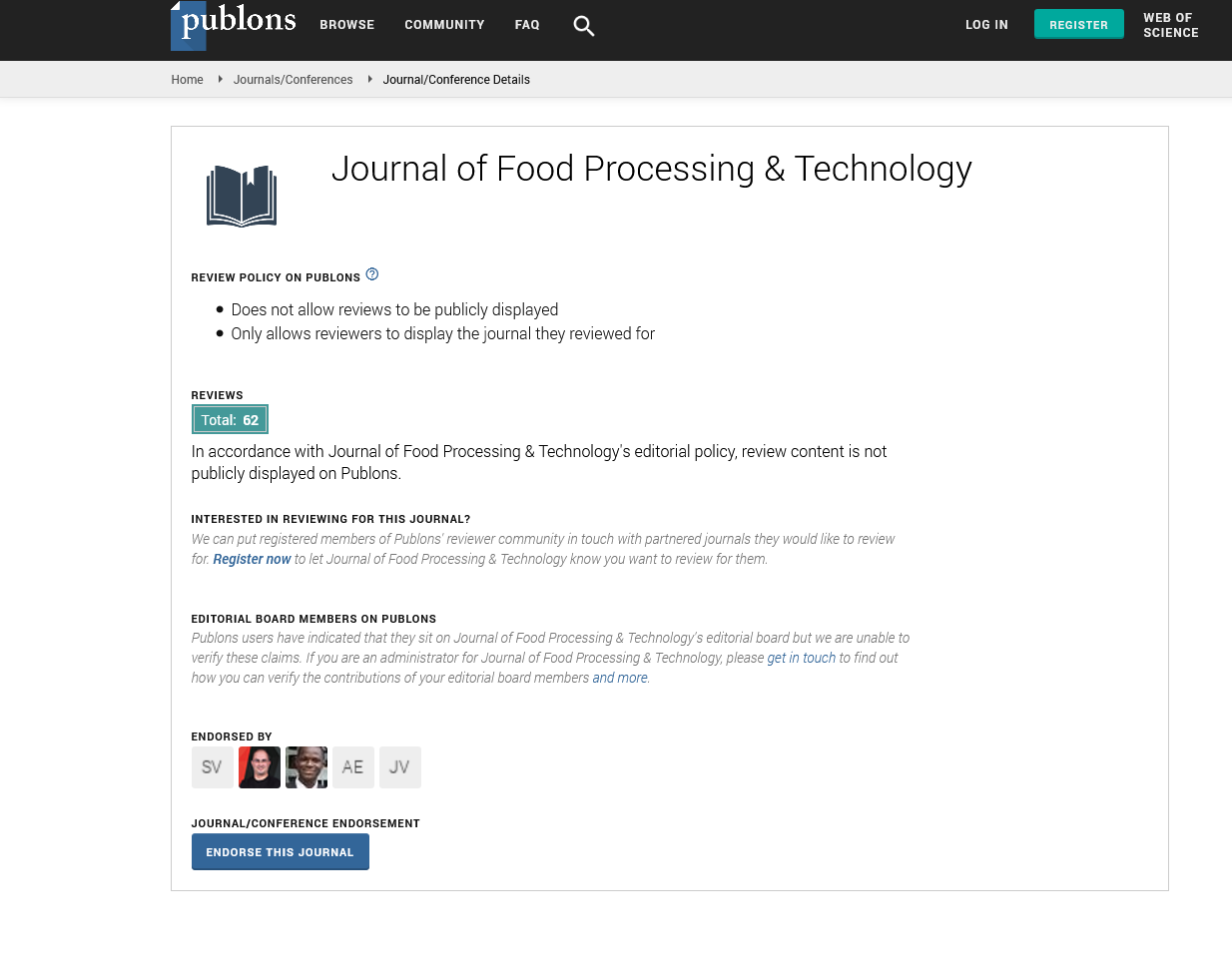Indexed In
- Genamics JournalSeek
- Academic Keys
- JournalTOCs
- China National Knowledge Infrastructure (CNKI)
- Access to Global Online Research in Agriculture (AGORA)
- Centre for Agriculture and Biosciences International (CABI)
- RefSeek
- Directory of Research Journal Indexing (DRJI)
- Hamdard University
- EBSCO A-Z
- OCLC- WorldCat
- Scholarsteer
- SWB online catalog
- Publons
- Euro Pub
- Google Scholar
Useful Links
Share This Page
Journal Flyer

Open Access Journals
- Agri and Aquaculture
- Biochemistry
- Bioinformatics & Systems Biology
- Business & Management
- Chemistry
- Clinical Sciences
- Engineering
- Food & Nutrition
- General Science
- Genetics & Molecular Biology
- Immunology & Microbiology
- Medical Sciences
- Neuroscience & Psychology
- Nursing & Health Care
- Pharmaceutical Sciences
Perspective - (2023) Volume 14, Issue 4
Developing Food Quality Sensors Based on Nanotechnology
Millett Huybrechts*Received: 30-Mar-2023, Manuscript No. JFPT-23-21288; Editor assigned: 03-Apr-2023, Pre QC No. JFPT-23-21288 (PQ); Reviewed: 18-Apr-2023, QC No. JFPT-23-21288; Revised: 27-Apr-2023, Manuscript No. JFPT-23-21288 (R); Published: 05-May-2023, DOI: 10.35248/2157-7110.23.14.1006
Description
Nanotechnology based sensors are becoming increasingly important for monitoring food quality and shelf life control. These sensors are small enough to be integrated into the food packaging material, enabling them to detect changes in pH, moisture, and other physical and chemical properties of food products. They can also be used to monitor temperature, humidity, and other environmental conditions in food storage and processing facilities. Nanotechnology-based sensors are capable of detecting even small changes in food quality, which can help prevent spoilage and food-borne illness. They can also help identify food adulteration and contamination. By detecting the presence of certain microorganisms, the sensors can alert food producers to potential safety issues. Nanotechnology-based sensors can also be used to monitor the shelf life of food products, allowing producers to adjust their manufacturing processes to extend the shelf life of their products. Nanotechnology-based sensors are not only beneficial for food producers and consumers, but also for the environment. By reducing food waste, these sensors can help reduce the amount of water and energy needed for food production. Additionally, nanotechnology-based sensors can help reduce the amount of packaging materials used, which can reduce the amount of pollution and waste generated from packaging. Nanotechnologybased sensors offer a wide range of benefits for food producers, consumers, and the environment. By monitoring food quality and shelf life, these sensors can help ensure the safety and quality of food products while minimizing waste, energy, and pollution.
Nanotechnology-based sensors have revolutionized the way food quality and shelf life are monitored and controlled. Nanotechnology-based sensors are small and cost-effective, and they can measure changes in food quality and shelf life in realtime. These sensors also have a wide range of applications, including monitoring food safety, shelf-life, and spoilage. Nanotechnology-based sensors are composed of nanomaterials, such as carbon nanotubes and nanowires, which are sensitive to changes in physical and chemical properties of food. These sensors can detect the presence of contaminants, such as bacteria, fungi, and toxins, as well as measure the physical and chemical changes in food quality and shelf life. Nanotechnologybased sensors offer numerous benefits to food manufacturers. For example, these sensors can help reduce waste by monitoring the quality and shelf life of food products and alerting manufacturers when a product is nearing its expiration date. Additionally, these sensors can improve safety by helping to detect contaminants in food products before they reach the consumer. Overall, nanotechnology-based sensors offer a costeffective and efficient way to monitor and control the quality and shelf life of food products. With their wide range of applications and benefits, these sensors are becoming increasingly important in the food industry.
Nanotechnology-based sensors have revolutionized the food industry, providing a precise and efficient way to monitor food quality and shelf life. By using nanomaterials such as nanoparticles, nanowires, and nanotubes, these sensors can measure key parameters such as temperature, humidity, and microbial activity. Nanoparticles, which are the smallest units of matter, are being used in a variety of food applications. For example, they can be used to detect food spoilage or contamination. They are also being used to improve the shelf life of food products, as they can interact with molecules that change their properties and act as a barrier to prevent oxidation. Nanoparticles also have the potential to improve the nutritional value of food products. By controlling the size, shape, and composition of nanoparticles, food manufacturers can tailor their products to have specific beneficial properties, such as enhanced absorption or improved bioavailability. However, there are still some complexities related to the use of nanoparticles in food products. For example, there are still questions about the safety of these particles, as well as the potential environmental impacts of their use. In addition, the use of nanoparticles in food production can add to the cost of the product, as well as present a challenge for regulating bodies when it comes to monitoring and evaluating their use. Overall, nanotechnologybased sensors offer a promising way to monitor food quality and shelf life. However, these sensors come with their own set of complexities, and more research is needed to understand the implications of their use in the food industry.
Citation: Huybrechts M (2023) Developing Food Quality Sensors Based on Nanotechnology. 14:1006.
Copyright: © 2023 Huybrechts M. This is an open access article distributed under the terms of the Creative Commons Attribution License, which permits unrestricted use, distribution, and reproduction in any medium, provided the original author and source are credited.


